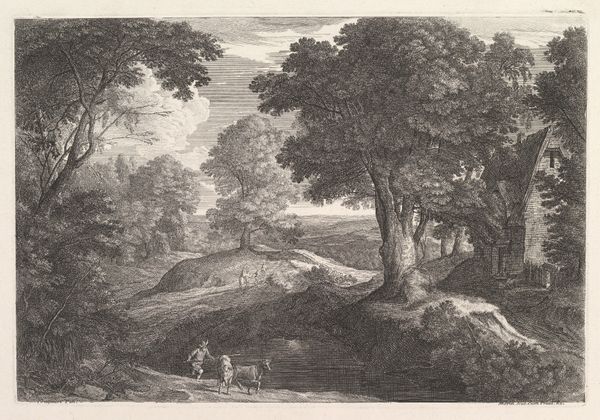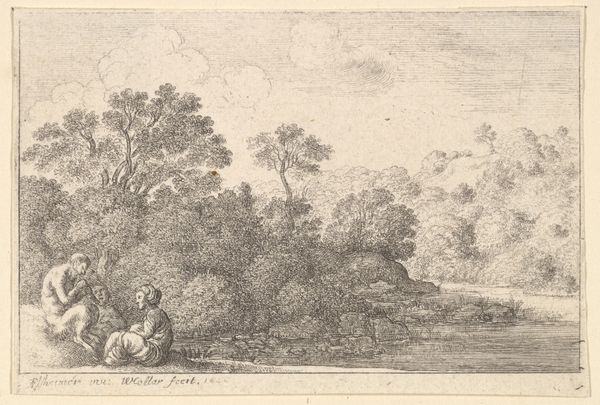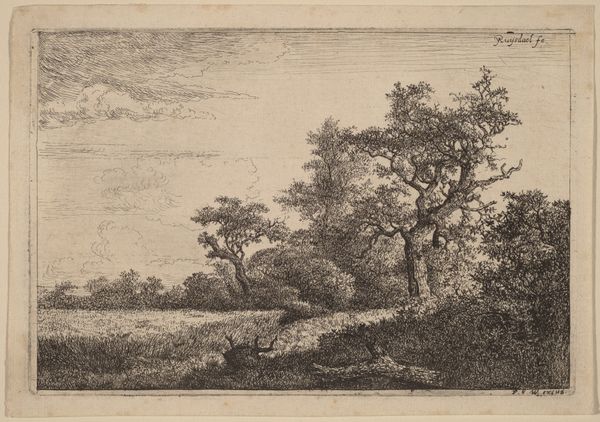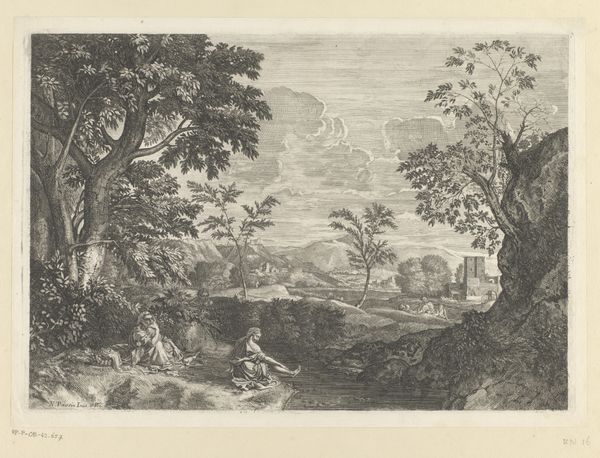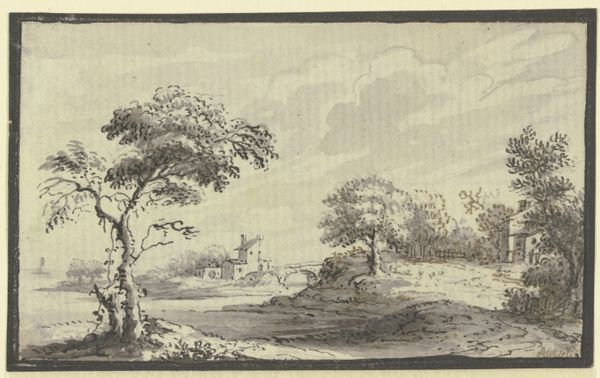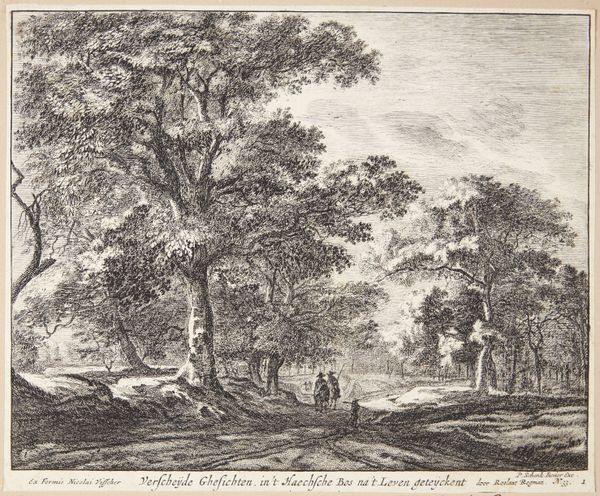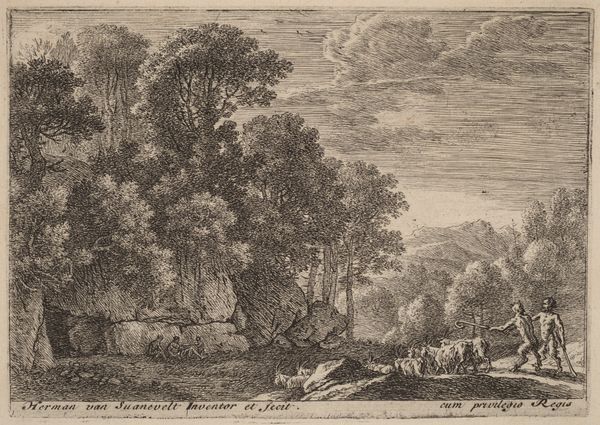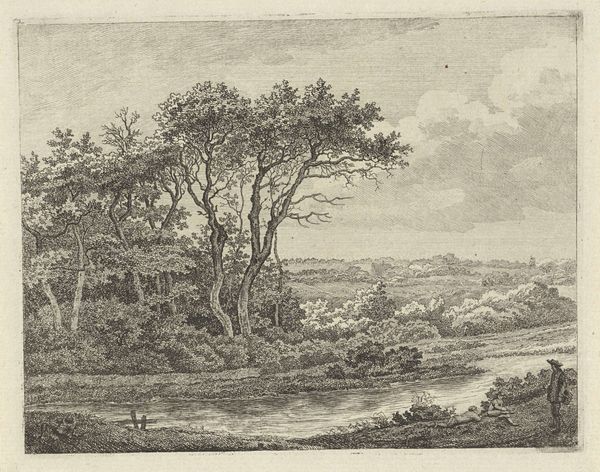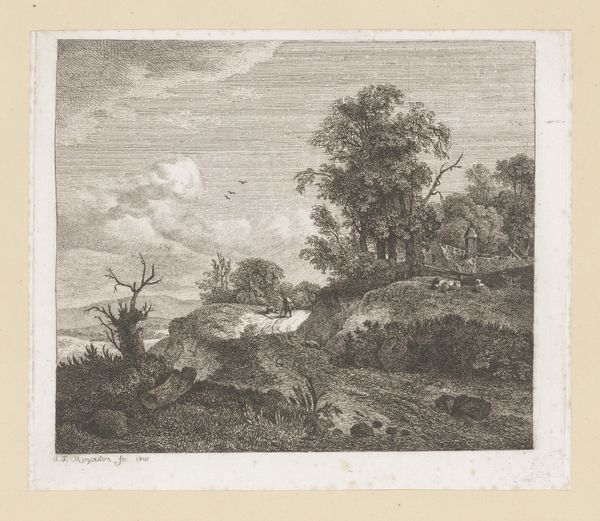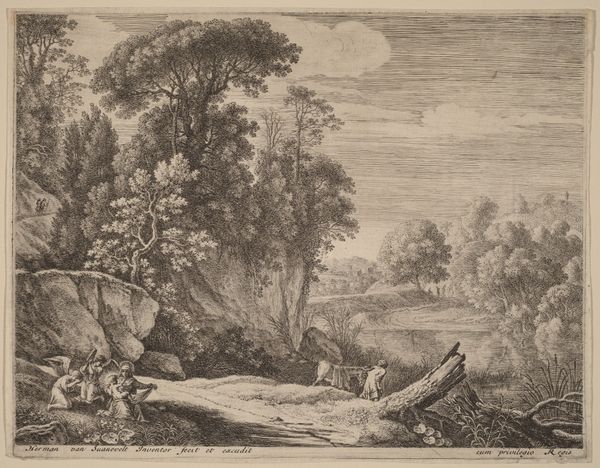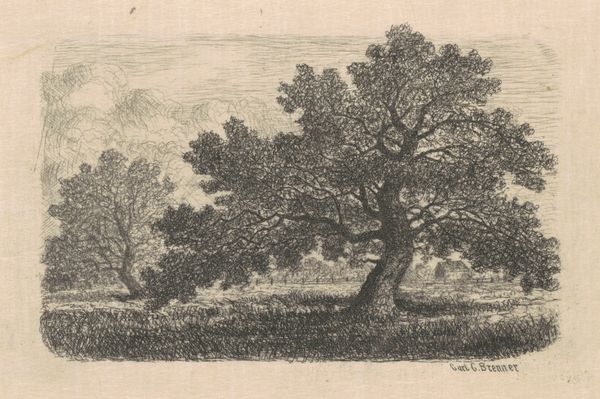
#
pencil drawn
#
amateur sketch
#
natural shape and form
#
light pencil work
# print
#
pencil sketch
#
charcoal drawing
#
pencil drawing
#
pen-ink sketch
#
pencil work
#
watercolor
Dimensions: plate: 7.3 x 10.9 cm (2 7/8 x 4 5/16 in.) plate: 27.1 x 35.8 cm (10 11/16 x 14 1/8 in.)
Copyright: National Gallery of Art: CC0 1.0
Curator: Before us is "Laundresses," a print made by Alexandre Calame in 1840. It depicts women washing clothes by a river. Editor: It has an undeniably melancholic mood, wouldn’t you agree? The composition, primarily in shades of grey, generates a subtle emotional complexity. Curator: Indeed. Note the way Calame structures the scene. The dominant tree on the left creates a visual anchor, while the figures in the water, rendered with light pencil work, become secondary elements. Editor: I'm particularly interested in situating this scene within the context of 19th-century social structures. Laundresses, often from the working class, were essential figures in urban life, and this artwork provides a peek into their laborious everyday routines. How might this affect its public role? Curator: Historically, Calame’s landscapes typically aestheticized nature, offering an escape from burgeoning industrial realities. But here, his method incorporates a hint of the social conditions shaping such "natural" environments. Editor: The formal reduction almost aestheticizes poverty. In that, the artist could well mean the figures to represent a general social concern. This contrasts the sublime of the landscape with human presence as somewhat picturesque—or as evidence of socioeconomic gaps. Curator: Perhaps. Observe the light pencil work creating textures, with varying density of lines that contribute to a rich tactile quality. These contrasts emphasize shapes and the forms and create subtle focal points. Editor: Yes, and those pencil lines point toward socio-economic concerns prevalent in that era's imagery. How labor and class became visible, albeit within highly mediated artistic traditions. Curator: What this exploration offers is insight into the convergence of nature, labor, and representation. It leaves us reflecting on the multiple layers embedded within such seeming pastoral images. Editor: It really makes you think about the conditions under which art is produced and consumed, revealing both aesthetic beauty and social commentary.
Comments
No comments
Be the first to comment and join the conversation on the ultimate creative platform.
